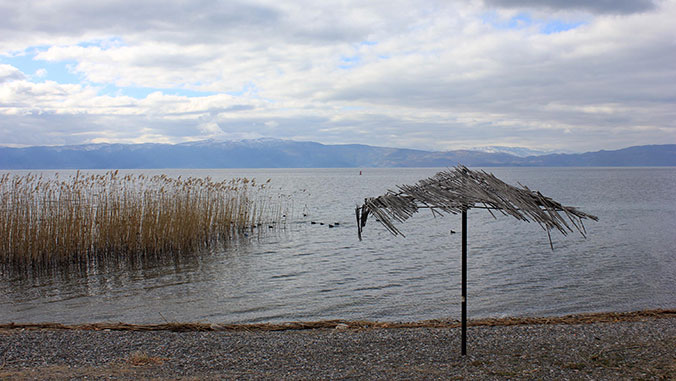
An international team of almost 50 scientists, including University of Hawaiʻi at Mānoa oceanography researcher Tobias Friedrich, analyzed one of the longest lake sediment records—more than 1,500 feet—from a European lake with a complete sediment succession spanning nearly 1.4 million years.
Research revealed that Lake Ohrid, located at the border between the republics of Albania and North Macedonia, first formed 1.36 million years ago. That makes it the oldest continuously existing lake in Europe, and allowed the team to reconstruct Mediterranean climate over the entire history of the lake in exquisite detail.
Lake Ohrid is famous for its exceptional biodiversity, with more than 300 unique (endemic) animal and plant species found nowhere else in the world. The collaborative project aimed to obtain new information about the age and origin of the lake, the climate history of the northern Mediterranean region, and the reasons for the high degree of endemism and biodiversity.
“Once we realized that we had recovered one of the longest and most complete lake sediment records to date, our team was blown away,” said lead author Bernd Wagner at the University of Cologne (Germany).
By analyzing the sediment core for the type and amount of pollen and carbon contained in its many layers, researchers were able to reconstruct swings in temperature and rainfall through time. With this, the team had high-resolution and independently dated climate and fossil data from the Mediterranean region.
Computer models reconstruct past climate
Friedrich, whose expertise at the School of Ocean and Earth Science and Technology (SOEST) is computer modeling of past and future climate, ran computer simulations of Earth’s past glacial cycles that account for ocean and atmospheric conditions and estimates of vegetation in the Mediterranean region.
The team could then compare changes in climate and rainfall through time as indicated by two separate sources—sediment records and computer modeling.
“Deriving a climate reconstruction for 1.36 million years with this quality and resolution is a miracle in itself,” said oceanography researcher Friedrich. “The fact that the results of my computer climate modeling agreed very well with the reconstruction is another miracle.”
The study was published in Nature.
See the full story on the SOEST website.
—By Marcie Grabowski

